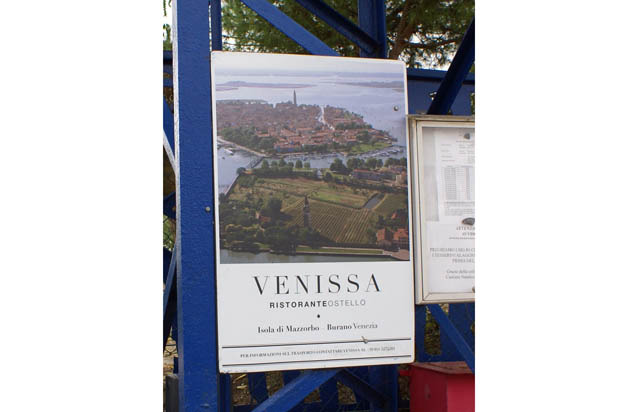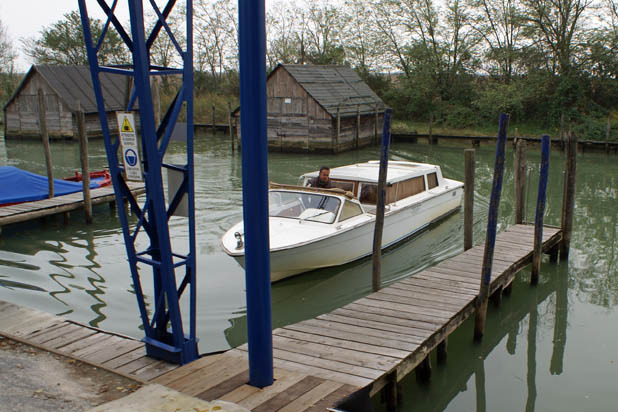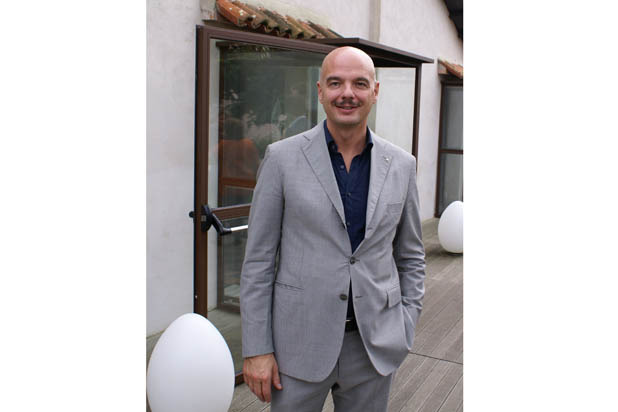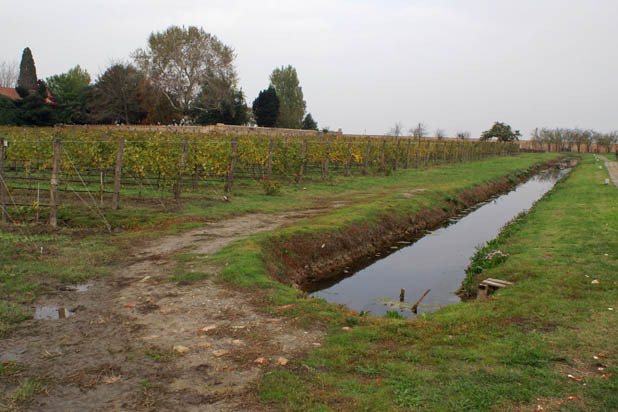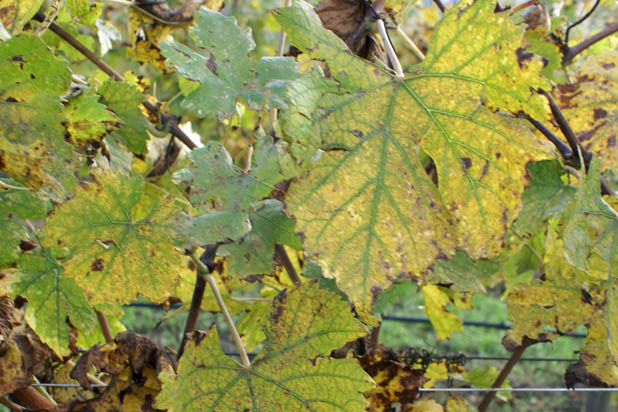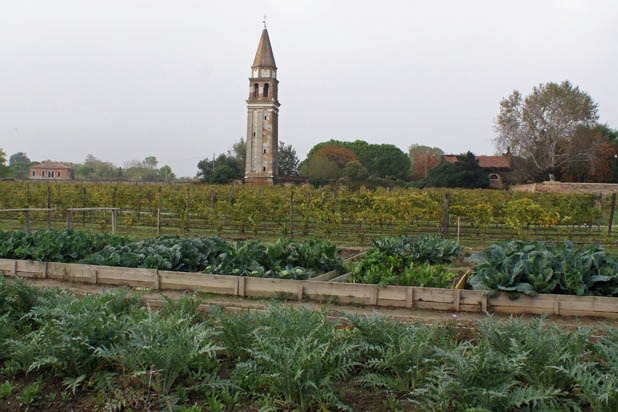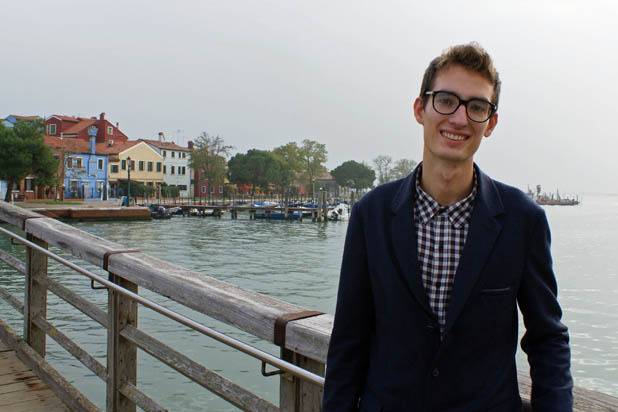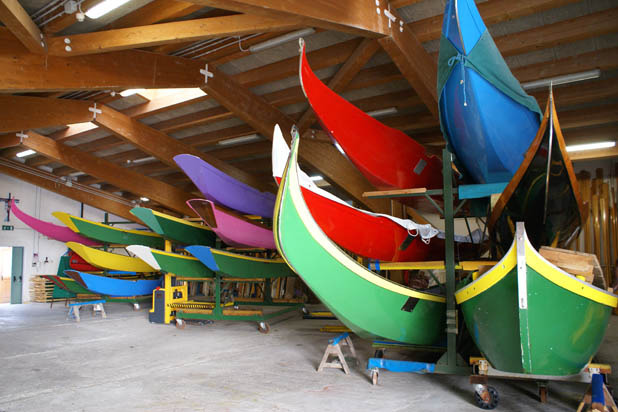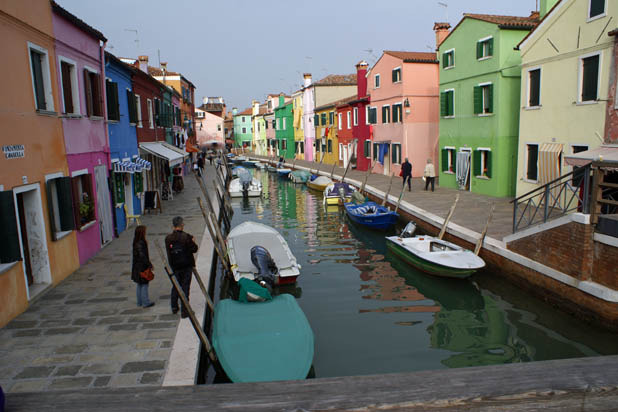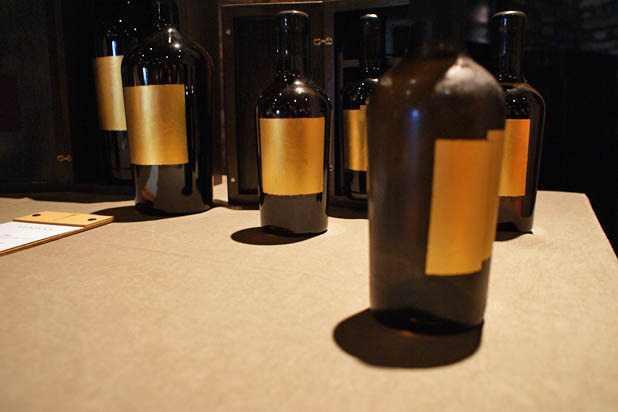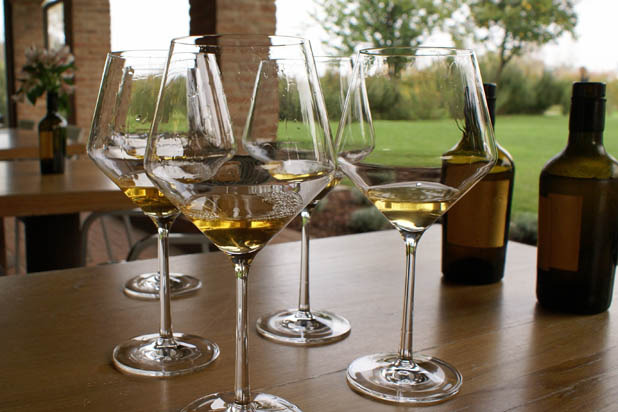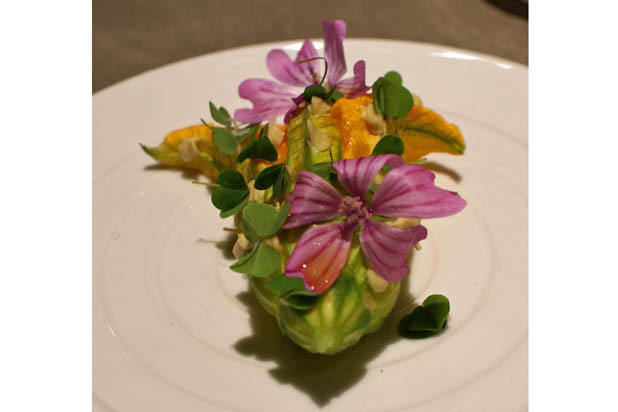Golden Wine From A Forgotten Grape On An Island Near Venice (Slideshow)
A poster with Mazzorbo in the foreground, Burano in the background, and Venice in the distance greets me at a hidden-away dock in Ca' Noghera near Venice's Marco Polo airport as I await a water taxi.
Water Taxi
My water taxi arrives, looking somewhat like an amphibious stretch limo, for the 20-minute ride to Mazzorbo and Venissa. The small canal lined with trees soon leads to broader sea lanes through marshlands as the water gets more brackish. We pass a small bevy of white swans along the way.
Gianluca Bisol
I am greeted by Gianluca Bisol, the mastermind behind the Venissa project. "I once took a customer to see the cathedral at Torcello, and I saw four grape vines in this woman's garden," he says. Intrigued, Bisol had the vines DNA tested and found they were an ancient variety called dorona, for the golden color of the grapes.
Vineyard with ditch
In 2005, after experimental plantings and micro-cuvées, the Bisols began installing a vineyard on the new estate, which they lease from the city of Venice as part of a public park. Totaling about 2.5 acres in size, the vineyard has good soil but fights against salt-water incursions from sea surges. It produces about 4,000 bottles annually.
Dorona leaf
The prominent veins of a dorona leaf after harvest remind me of the canals of Venice. After picking, the grapes leave Venissa by barge and are trucked to Tuscany, where master enologist Roberto Cipresso turns them into white wine using red-wine methodology, including 20 to 30 days of vinification.
Veggies, vineyard, and tower
Part of the estate is given over to retirees residing on the two islands to grow vegetables, some of which they sell to Venissa chef Antonia Klugmann. The restaurant is open for lunch and dinner during season and is popular with Venetian food lovers.
Matteo Bisol
Matteo Bisol, son of Gianluca, and Venissa's — and Dorona's — biggest booster, standing on the wooden bridge leading to neighboring Burano, asks me to tell visitors to that tourist destination that they should stop first at Mazzorbo for a stroll through the vineyards.
Gondolas
Matteo leads me through the narrow streets of Burano — there are no cars, of course — to a building which houses a fleet of gondolas owned by the town's boat club. Burano's boaters generally fare well in the annual competition, the Venice Regatta Storica, first rowed in 1315. Mark your calendar for the first Sunday in September, 2014.
Burano Houses
Burano is known for three things — its colorful houses, its handmade lace, and its dozens of sidewalk cafés that cater to visiting crowds. Next year, the Bisols will buy a few buildings on the island and restore them as guest houses. "It's really a quiet town, except from 11 in the morning, when the tourists come, until 3, when they leave," Matteo laughs.
2 vintages
Back at Venissa, two vintages of Dorona appear. Their labels are stunning — baked-on gold leaf, a few etched words, nothing more. The ones in the middle with the solo gold rectangles are from the initial 2010 vintage, and the double gold on the right is 2011. Prices at Venissa are about $165 for a 500-milliliter bottle or $195 for the same wine packaged in an elegant wooden box.
Golden Dorono
With the vineyard as backdrop, we taste the two vintages on the terrace. Both are exquisite. The 2011: Ripe peach, apple skins, hints of toast and licorice, modest tannins, a savory note in the finish. The 2010: More minerally with chalkiness, raspier acidity, and flavors of preserved fruit, though neither wine is sweet. I could sip forever.
Squash blossom
But dinner calls, and dinner at Venissa is not to be missed. A small restaurant, it nevertheless has an expansive menu and wine list. As a 2011 Bisol Cartizze Prosecco is being poured, smoked squash blossoms with salt and balsamic appear. Octopus, fig ravioli, and goose breast are on the way. Tell the water taxi to wait.
